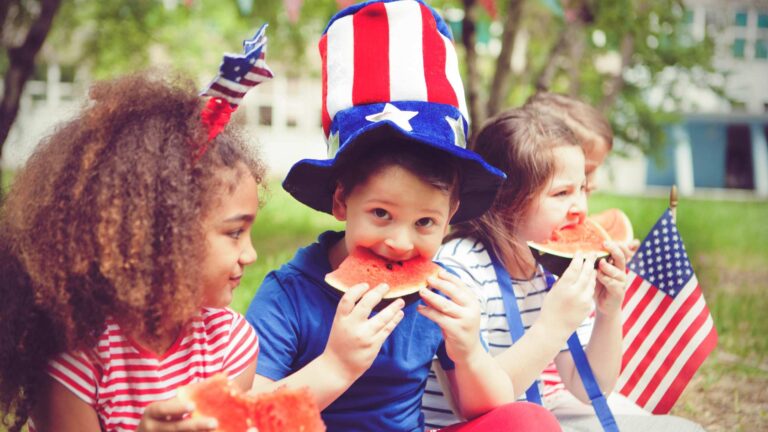It’s that time of year again! The leaves on each tree are changing color, the air is getting colder, and families are preparing for Thanksgiving Day. For many families with neurodivergent loved ones, this can be a challenging time. Preparing for an autism-friendly Thanksgiving can seem exhaustive but ensuring everyone in your family feels comfortable and welcome on the big day is essential. With that said, everyone will appreciate all your hard work to ensure your autism-friendly Thanksgiving is delightful!
This blog post about creating an autism-friendly thanksgiving will explore some of the challenges children on the spectrum may face on this day and share tips for making your holiday more memorable and fun! We hope this list helps the preparations go a little smoother so you can soak up all the holiday festivities!
Why Are the Holidays Challenging for Many on the Spectrum?
Thanksgiving can be difficult for many people on the autism spectrum. The sensory overload of a large family gathering, the pressure of small talk, and the need to conform to social norms can be overwhelming. In addition, the added stress of preparing for and traveling to holiday gatherings can make autism challenges even more difficult to manage.
Lastly, many children with autism live with food aversions and selectivity, making the thanksgiving holiday even more challenging to navigate. By addressing these core needs before events and being prepared with some favorite safe foods, you can eliminate a lot of eating-related distress.
The fantastic news is that you can have a wonderful autism-friendly Thanksgiving with thoughtful planning!
Why Is It Important to Prepare for an Autism-Friendly Thanksgiving?
It is crucial to plan and prepare your child for Thanksgiving Day because changes to routine can be severely distressing for a child with autism. It can result in problem behavior and emotional dysregulation. One of the most critical steps you can take to prepare your child for thanksgiving is to let them know what’s to come so they are ready.
It’s essential that the day not come as a surprise. Showing your child pictures of faces they will see, foods they may taste, and where you will be are enormously helpful to a neurodivergent child. When doing this, it’s essential to discuss details. Explain the behavior you expect. Importantly, focus on the fun things about thanksgiving that make it great! This can help reduce stress tremendously.
Steps For Creating a Stress-Free Autism-Friendly Thanksgiving!
Here are some valuable tips to make your autism-friendly thanksgiving even more amazing!
1. Check-In with a Support System.
This can help reduce overwhelm by reminding you that you have help. Thanksgiving can be a time to enjoy and celebrate with loved ones – regardless of autism challenges. Find ways to include the people that love and support your neurodivergent family. Let them know how they can help make this autism-friendly thanksgiving easier for everyone!
2. Seek Out Autism-Friendly Events or Make Your Own!
Autism-friendly gatherings can help create a more supportive and inclusive environment. With some planning and effort, it’s possible to host your event or make the place you will be traveling to more autism friendly. Review these tips and seek out some autism-friendly thanksgiving events in your area!
3. Recognize Sensory Overload Triggers.
Loud noises, unfamiliar environments, and overwhelming conversations can all be triggers for sensory difficulties in autism. Consider dimming the lights or playing calming music to reduce overstimulation if your child appears stressed. Exit the congested area to allow for some deep breaths and decompression. If possible, hang out in more open spaces with minimal crowding. Also, be mindful of too many guests in the house.
4. Provide Structure and Familiar Activities.
Setting up a routine before the holiday and sticking to it throughout the day will help keep everyone comfortable and relaxed. Additionally, pack some helpful toys and tools you know your child loves and consistently enjoys. Coloring books, art projects, an iPad, and quiet games can provide an excellent outlet for your loved one. If possible, involve them in the Thanksgiving preparations to feel more included and empowered.
5. Work Hard to Understand Your Childs Needs.
Finally, it is essential to remember that everyone can have a fulfilling holiday experience by understanding each other’s needs. Be patient with yourself and others while navigating new situations.
By considering these tips and prioritizing the needs of your loved one with autism, you can create a warm and enjoyable autism-friendly thanksgiving!
What About Food Aversions and Selectivity?
Food aversions and selectivity are among the most prominent issues faced by people with autism during the holiday season. Here are some tips for making Thanksgiving more autism-friendly so everyone in your family enjoys the feast!
Autism-Friendly Thanksgiving Food Aversion Tips!
1. Offer small bites.
When introducing a new food, simply offer a small bite, so there isn’t pressure to complete a significant portion. Eating a small slice of turkey might feel less intimidating than consuming a whole leg!
2. Thoughtfully pair foods.
Serve foods you know your child already loves with new or previously rejected things. For each bite of new food your child dislikes, you can offer them a taste of something they enjoy! Pair exploring new foods with having a positive experience.
3. Implement a careful reward system.
Assign points, tokens, or some value to trying new foods or foods your child doesn’t organically enjoy. Reward them for eating these foods with points towards extra iPad time or their choice of activity. Make sure that the reward you select is motivating for the child! Steer clear of bribery, which doesn’t work for the long term!
4. Provide gentle exposure.
For example, if your child rejects a particular food but you know it will be on the Thanksgiving Day table, reintroduce it slowly. For instance, if your child hates fruit, place it on the coffee table during a fun game night. Once the child can tolerate the presence of the food, slowly integrate it into the table during mealtimes. Next, place it on their plate, but set no demands to eat it. Eventually, work up to a tiny bite when they can tolerate it. By the time it’s served or seen on thanksgiving, the distress should be minimized!
5. Keep your cool.
It can take children on the spectrum many attempts before they are willing to try something new. Be patient with your neurodivergent child as they discover new foods. When you feel challenged, take a break! Avoid making mealtime the trigger for problem behavior or stress.
6. Provide options.
Offer a variety of options when serving thanksgiving foods. If veggies are important, provide two choices to offer some control. Try to make each selection exciting if you can!
7. Eliminate the possibility of medical issues.
Children on the spectrum often struggle with other medical problems. If your child continues to shut down food, rule out the possibility of medical illness or discomfort. Discuss the possibilities with a doctor, BCBA, or nutritionist.
Your Autism-Friendly Thanksgiving!
Having an autism-friendly Thanksgiving might take a bit more effort, but it is well worth it! By being mindful of your choices and how you celebrate, you can ensure everyone has a great time. We hope this blog post provided valuable advice for making your Thanksgiving Autism-friendly exceptional! Happy Thanksgiving from us!
ABA Centers of America and Autism-Friendly Thanksgiving!
We pride ourselves on serving the autism community in remarkable and profound ways. We give families and their neurodivergent loved ones the tools and techniques they need to navigate difficult experiences, like the holidays, so they can genuinely enjoy their lives. We believe that holidays can be meaningfully shared so everyone feels included.
You can have more memorable moments every year with great therapy approaches like Applied Behavior Analysis or ABA therapy. For more information about us and how we help families daily, call (844) 923-4222 for a free consultation or visit abacenters.com.







